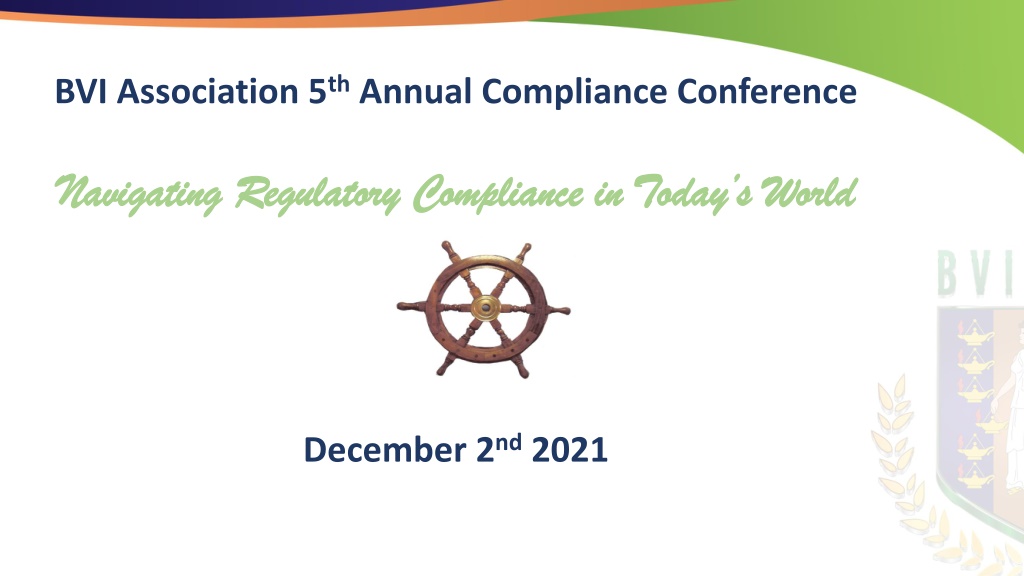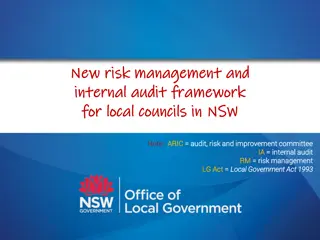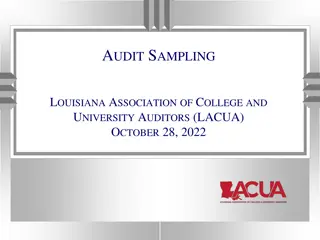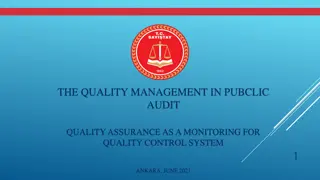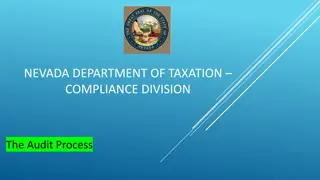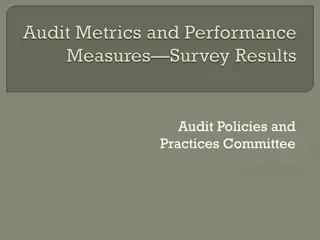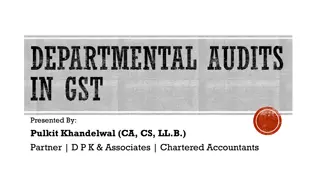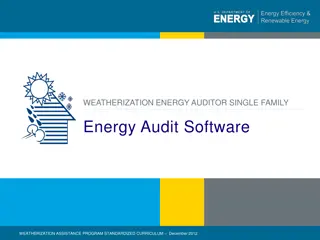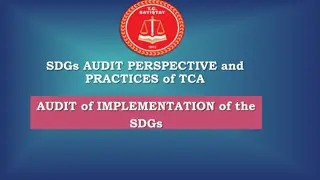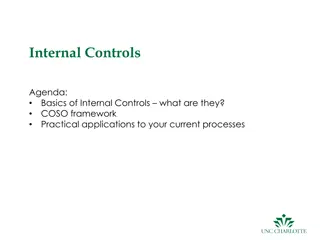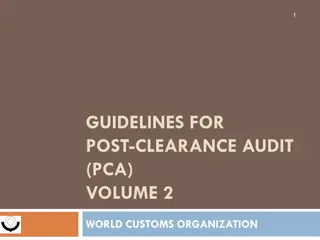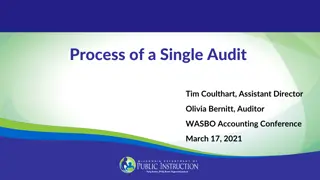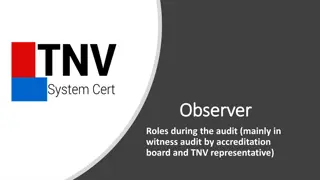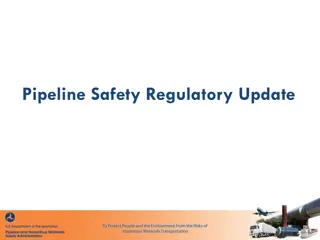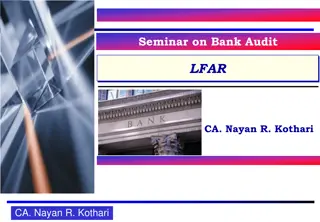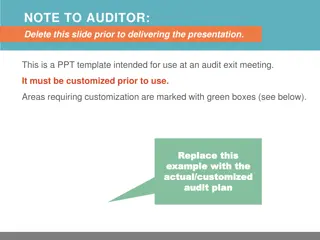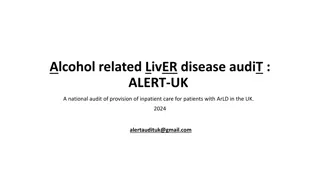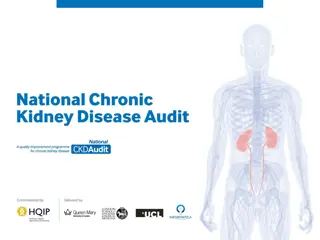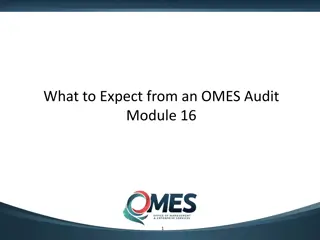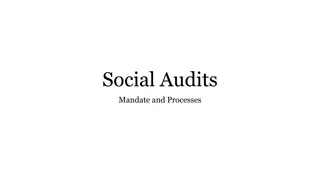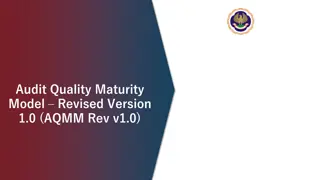Navigating Regulatory Compliance in Today's World - Internal Audit Insights
Explore the essential aspects of internal audit functions in regulatory compliance, including purpose, requirements, features, and responsibilities. Learn how internal audit helps protect assets, assess risks, and enhance governance effectiveness.
Download Presentation

Please find below an Image/Link to download the presentation.
The content on the website is provided AS IS for your information and personal use only. It may not be sold, licensed, or shared on other websites without obtaining consent from the author. Download presentation by click this link. If you encounter any issues during the download, it is possible that the publisher has removed the file from their server.
E N D
Presentation Transcript
BVI Association 5th Annual Compliance Conference Dummy Text Navigating Regulatory Compliance in Today s World Navigating Regulatory Compliance in Today s World December 2nd 2021
Managing the Internal Audit Function Responsibility Dummy Text How do firms meet this requirement? Are Group CO's suitable to perform this function? Stacyann Shaw Goodridge LLM., FICA
AGENDA Dummy Text Internal Audit - what is its purpose? Who is required to have it? What should it entail? Who should do it?
The PURPOSE OF INTERNAL AUDIT The primary role of Internal Audit is to help the Board and Executive Management to protect the assets, reputation and sustainability of the organisation. assessing whether all significant risks are identified and appropriately reported by management and the Risk function to the Board and Executive Management; Dummy Text assessing whether they are adequately controlled; challenging Executive Management to improve the effectiveness of governance, risk management and internal controls.
REQUIREMENT FOR INTERNAL AUDIT FUNCTION Section 34 3(A) Regulatory Code (as amended) Class I and II trust licensees are now required to have in place an internal audit function. This does not apply if - the licensee does not hold customer monies or, Dummy having regard to the nature, size and complexity of the licensee, the licensee determines that it does not require an internal audit function. Text Where such a determination is made, the licensee should within 14 days notify the BVI Financial Services Commission (FSC) in writing of that fact, stating its reasons
FEATURES OF INTERNAL AUDIT possess sufficient independence to carry out the licensee s internal audit obligations objectively; report directly to the board ensure that senior management and the board react to, and act on, its recommendations; have unrestricted access to the staff of the licensee, (ii) documents and information relating to the business of the licensee and its customers; Dummy Text have sufficient human resources with adequate professional qualifications, relevant auditing experience and training to understand and evaluate the business they audit
RESPONSIBIIITIES OF INTERNAL AUDIT assessing whether the licensee s existing risk management strategy, policies, systems and controls and its internal controls remain sufficient, effective and appropriate for the licensee s business; assessing whether the licensee s risk management strategy, policies, systems and controls and its internal controls, are being implemented and complied with; where relevant, assessing whether the systems and controls for monitoring and assessing the on-going capital requirements of the licensee are effective and are being implemented; where the licensee has a separate risk management function, periodically reviewing that function; and (e) periodically reviewing the licensee s compliance function. Dummy Text
BENEFITS OF INTERNAL AUDIT An effective internal audit function can have a positive impact on the control environment of an organisation and the effective design and operation of internal control Supports risk management as an essential part of governance structure Dummy Internal Audit should be independent of these functions Text
SCOPE OF INTERNAL AUDIT Audit should evaluate the design and operating effectiveness of the organisation s policies and processes. As part of this evaluation, Internal Audit should consider whether the outcomes achieved by the implementation of these policies and processes are in line with the objectives, risk appetite and values of the organisation.) Dummy Text Testing whether policies and procedures are fit for purpose Are they achieving what they were designed to do and if not, why not?
HOW TO DETERMINE SCOPE Assess, on a risk-based approach the design and operation of key regulatory systems and controls local regulatory requirements and internal / Group standards. Business modeI Risks presented by this business modeI General business proposition Dummy Text
SCOPING EXAMPLE AREAS Corporate Governance Compliance function and monitoring AML/CFT systems and controls (including customer take-on, KYC, risk assessment, screening and suspicious activity reporting); Dummy Text Transaction monitoring; Regulatory remediation projects
WHO SHOULD CONDUCT THE AUDIT Determined by organizationaI structure Is there capacity within structure either IocaI or group function? What must the IA teams display? Dummy Independence knowledge and skiII Access to records and senior management Access to stakeholders Ability to monitor and drive conclusion of audit findings Text
ROLE OF THE BUSINESS Get the best out of internal audit exercise Agree on scope Share information Know Your Business Communicate Dummy Text
IF NOT THEN WHAT? If there is no internal audit, consider what is in its pIace How does the organistion achieve independent review How is monitoring achieved How are controls tested? Compliance monitoring program Enterprise risk management Dummy Text
TO CONSIDER... Is your organization adequately resourced with independent, qualified persons capable of performing the internal audit function Are those resources independent of the business and other functions? Dummy Text Consider the size, scope and complexity of your organisation Do you have clearly defined reporting Iines
D,xcvmadscdsmdsandxa Assess the risk Identify the treatment Determine which option is best suited to your organisation Make a pIan Request resources Ask for what you need Dummy Text
Dummy Text
